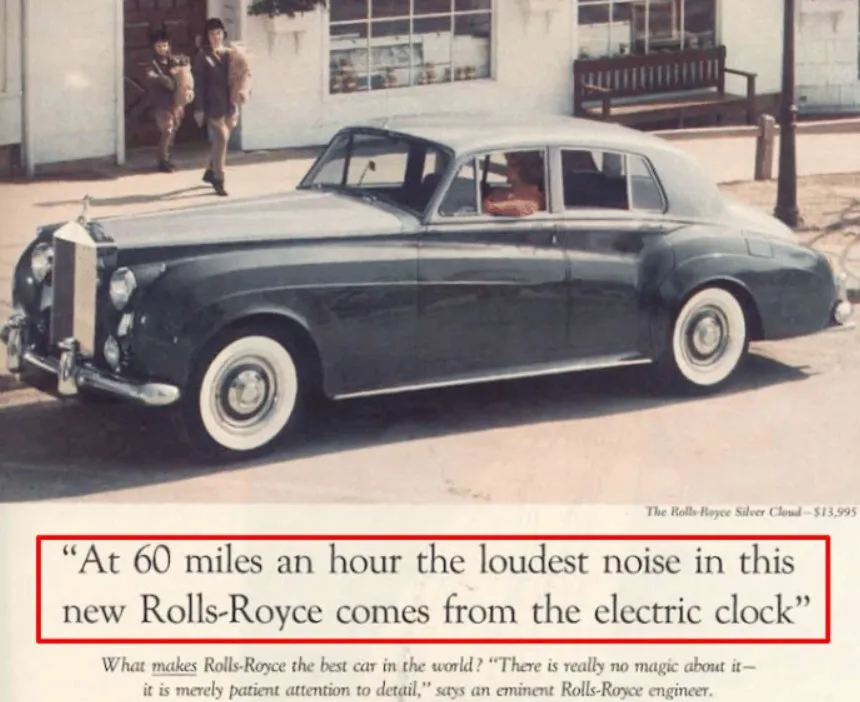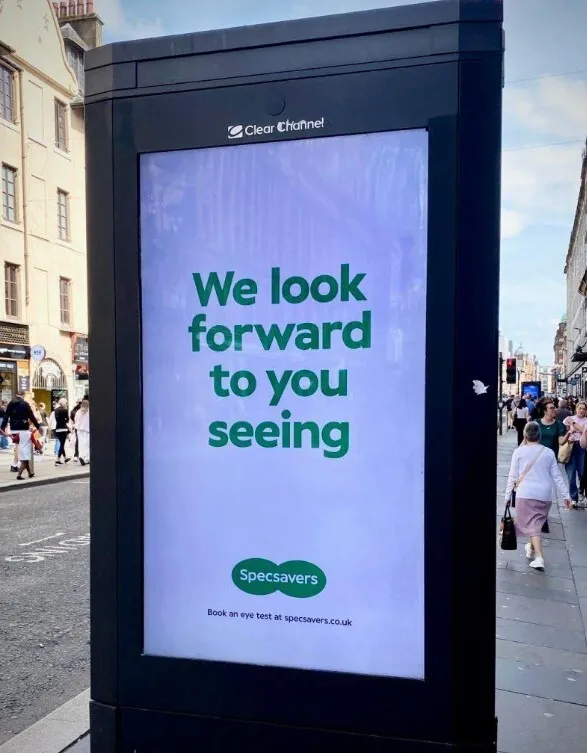All you need to know about direct response copywriting.
Direct response copywriting is an art form. The best examples elicit an immediate response from readers, drive conversions and ultimately boost sales.
But what is direct response copywriting, how does it differ from traditional copywriting and, more importantly, can anyone do it?
What is direct response copywriting?
A direct response copywriter creates compelling marketing content, such as emails, ad copy, or sales pages, specifically designed to elicit an immediate, measurable action from the audience, like a purchase, sign up, or clicking a link.
In direct response copywriting, words are everything. As a business, your results depend on them, whether in paid advertising or organic marketing.
Think of direct response copywriting as a powerful marketing strategy used in digital and print adverts and material for improving conversion rates on landing pages, blogs and other types of content.
It’s designed to inspire readers to take immediate action as soon as they’ve read your compelling copy. For example, you may want them to:
| Buy your products or services | Sign up for your newsletter |
| Download a brochure or guide | Follow you on social media |
| Take advantage of a freebie or giveaway | Refer you to other potential customers |
| Donate to your charity | Subscribe to your email list |
There’s a clean distinction between direct response copywriting, like Facebook ads, and TV ad copywriting.
TV copywriters play the long game with creative commercials that build brand awareness. They don’t want you to do anything specific; they just want you to remember their products above all others when you shop online or in the supermarket.
Direct response copywriters do just the opposite – they want you to act right now through a clear call-to-action. They’ll craft persuasive copy that addresses a reader’s pain points, needs and worries before offering an immediate solution – whether it’s making a purchase or signing up for a subscription service.
Where did direct response copywriting originate?
Direct response copywriting has been around for years. Copywriting gurus like David Ogilvy and Eugene Schwartz were crafting memorable campaigns for renowned brands like Rolls-Royce and American Express back in the mid-20th Century.
Nobody understood the need to speak directly to the reader on a personal level and tug at their emotions better than Ogilvy.
He once said:
“Do not address your readers as though they were gathered together in a stadium. When people read your copy, they are alone. Pretend you are writing to each of them a letter on behalf of your client.”
Ogilvy and co knew that this personal connection was crucial for building trust and encouraging audiences to make a decision – the very essence of direct response copywriting.
They proved that you could send a total stranger a letter or printed flyer and persuade them to buy your products or services – all through the power of the written word and a direct, personal approach.
Direct response copywriting techniques have come on since then, with landing pages, email campaigns, social media ads, and sales funnels taking over from promotional mailshots. But the principle is the same – compelling, dynamic, copy that understands a reader’s desires and concerns, offers an immediate solution and converts into sales.
How does direct response copywriting work?
Direct response copywriting comes in many forms. It can mean an ad or sales letter promoting a product written for a target audience, whether it’s mailed directly to prospective customers or printed in a newspaper or magazine.
The aim is to elicit a direct response from the reader and prompt them into taking action by buying your products or signing up for your services.
Copywriters leverage a variety of channels to deliver their message, including:
| Landing pages | Pay-per-click ads | Social media ads |
| Brochures | Newsletters | |
| Direct mail | Sign-ups | eCommerce sites |
Simply, direct response copywriting is any type of marketing that requires an immediate response with the objective of achieving sales and getting the reader to engage with your brand.
Here’s how it’s done:
1. A knockout headline that grabs your attention
A key principle of direct response copywriting is a punchy and powerful headline that draws you in, grabs your attention and compels you to keep reading.
Most of us have a short attention span, offering a limited window of opportunity for direct response copywriters. Every word matters and should be carefully thought out, like this classic David Ogilvy ad for Rolls-Royce:

The benefits of owning a Rolls-Royce are subtly hidden in this effective headline. It’s not a hard sell, but rather implied to the reader using simple language at a time when many car engines were incredibly noisy. Not only that, but the headline makes the reader want to learn more about the vehicle and what makes it so quiet.
The golden rule of a belting headline is to get the person to read the first line of your content, then the second line, and so on. The ultimate goal is to entice them to click on your CTA and convert – and it all starts with a bunch of well-chosen, emotive words in the headline.
2. Clear, compelling copy readers understand
To get your readers to act on your words, you must write at their level in plain language they’ll understand. Your content should be clear and concise, speak directly to your audience, and guide them towards your desired action.
There’s a fine line between speaking to a reader like a first-grader and overcomplicating things so your message becomes blurred. Aim for the middle ground with readable, jargon-free, trustworthy content that’s easy to comprehend, so readers know exactly what you’re selling or what you’re prompting them to do.
The following example uses straightforward language to encourage the reader to make a purchase and enjoy a discounted offer by clicking the ‘Shop Now’ button.

3. Make it personal
Effective direct response copywriting is personalised. It shouldn’t gush about your business – it should focus on your customers’ needs, preferences and problems. Also, make sure your tone is conversational rather than formal, addressing the reader as ‘you’.
This is a common mistake many well-intentioned businesses make. They write at length about themselves but forget to make a personal connection with the reader.
Essentially, direct-response copywriting must be relevant to the reader to get the results you want. Get to know your target audience, their challenges and their needs – and address them directly in your content with personalised messages and experiences.
Always remember, direct response copywriting is about your customer, not you. This Specsavers outdoor ad is a prime example as it’s talking directly to ‘you’ with a strong call-to-action at the end.

4. Create a sense of urgency
A key factor in boosting conversions through direct response copywriting is to create urgency in your content. That’s because people tend to avoid spontaneity and delay important decisions – especially when it involves spending money.
Direct response copywriters are great at introducing urgency into their content to encourage quick decision-making and interactions, whether clicking a button in a CTA or a product link in a blog. Using terms such as ‘Get your…’ or ‘Act now…’ also prompts faster action and ultimately higher conversion rates for your campaign.
This is a perfect example, using a mere six words to convey a strong message and prompt a response:

5. Craft a winning CTA readers can’t ignore
An irresistible call to action (CTA) is a vital component of direct response copywriting. It can make or break your copy. It should inspire you to act now rather than later and come with clear messaging and direction, whether it’s clicking on a button or downloading a form.
A powerful and effective CTA should be:
- clear and straightforward
- focused on a single, specific action
- easy to find and engage with
- tailored to your audience
Including these elements in your CTA can get you the responses – and sales – your business is aiming for. You’re telling your reader they are getting a good deal or can’t be without your service, while showing them how to go about signing up or buying your product.
A good example of a solid, persuasive and actionable CTA is:

You’ll also find another quality CTA at the bottom of this article.
What are the advantages of direct response copywriting?
Direct response copywriting offers several key benefits, both for businesses and customers:
- Fully trackable: You can easily monitor and analyse results and performance.
- Fully measurable: It makes working out ROI simple by evaluating how much you spend to reach each customer and how successful the campaign has been.
- Fully targeted: Powered by data, campaigns can be highly targeted to reach the optimum audience, often leading to better conversion rates and more sales.
Yet perhaps the biggest benefit of direct response copywriting is the speed at which it can deliver results, making it a powerful strategy for marketeers everywhere.
Need help with your direct response copywriting campaigns?
At MRS, our award-winning team can help drive more conversions for your business with quality direct response copywriting. Whether it’s through dynamic SEO, powerful PPC, or other channels, we’ve got you covered. Contact us today.






